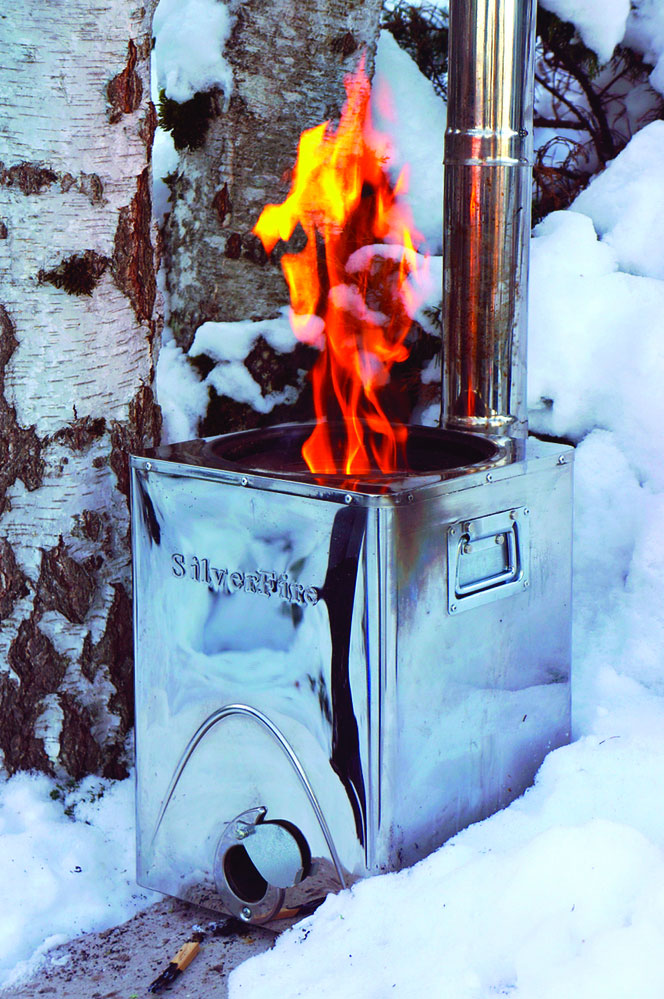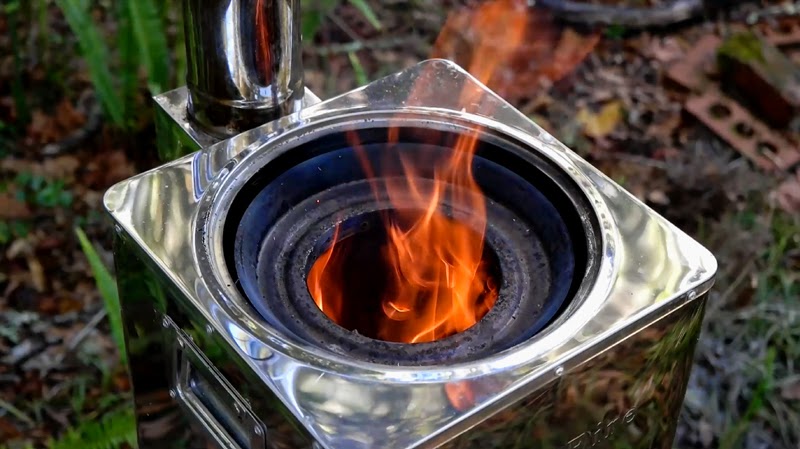Last year I posted a SilverFire Hunter review on my Youtube channel and it’s garnered over 5,000 views thus far.
Here it is:
The SilverFire Hunter is what’s known as a “TLUD” or Top-Lit UpDraft stove. That means it circulates air in a particular pattern that makes it more efficient than a comparable model rocket stove or, if you’re really cheap, an open fire – which it’s WAY more efficient than.
If you need to cook off-grid or even need a small stove for a cabin, tiny home or a tree fort that doesn’t require anything other than a few sticks to run, you’ll want a TLUD of some sort. Today, after a couple of years of using my SilverFire Hunter, it’s time for a full written review.
Cooking On Next to Nothing: A SilverFire Hunter Review
The first thing you’ll notice when you unpack the Silverfire Hunter is that it’s a pretty piece of equipment.
Rather than being painted metal like some stoves, it’s a shiny stainless steel piece of space age tech.
The next thing you’ll notice is that it has some weight, but not so much that it’s a total pain to cart around.
This is no backpacking stove, certainly (if you want one of those, it’s hard to go wrong with something super lightweight and durable like the Emberlit), but the SilverFire Hunter is perfect for putting in the truck on your way to the mountains.
Lighting the stove properly takes a little practice, but once you have that down and get used to working the draft at the bottom, you can get a nice clean burn going that will rapidly cook breakfast or boil a pot of water.
The SilverFire TLUD is rather expensive but it’s a marvel of engineering.
You can load it with a small amount of wood and cook an excellent meal without feeding in any additional sticks. We’re talking 8 pinecones or so. This thing is a monster at converting biomass into heat. Incredibly efficient. I like my StoveTec, but this – though a bit more complicated and unwieldy thanks to the chimney – is remarkable.
Now, as for using it to cook indoors, I dunno. I’ve heard some say that it’s fine to use indoors provided you run the stovepipe out properly… yet I think even then it would be quite smoky. The chimney does siphon away much of the smoke when there’s a pan or pot over the combustion chamber – yet when you take that pan away, plenty of smoke ensues.
I have corresponded with the creator of the SilverFire Hunter about the design of this model. It’s based on super-efficient Chinese designs and was created with the help of their engineers. Apparently, the Chinese are the folks that know the deal with efficient biomass stoves.
That said, the SilverFire Hunter stoves is made in China, which I would be remiss in omitting from this review, just in case you only by US goods, or Swiss goods, or whatever.
I’ve used this stove for cookingand boiling water when the power was down for a day. It works great and requires a lot less maintenance during cooking than a rocket stove.
With the SilverFire Hunter, you load up the chamber with flammable material (I like to use dry Mexican sunflower stems and oak twigs), light it, then cook for an hour or more until the fuel is consumed, unlike the StoveTec or other rocket stoves which you feed continuously while cooking.
Everyone I’ve demonstrated this stove to has been impressed… and I’m still impressed two years after purchasing it.
You can get the SilverFire Hunter on Amazon here.




8 comments
Would this work for a greenhouse stove?
I don’t think it would stay hot enough for long enough. The burn time is about 2 hours. You’d probably want something more like a rocket mass heater.
That’s what I figured. Thanks!
Dear Sir,
If I remove the inner insulation around the outside of the burn chamber do you think may make a worthy wood burner heater please?
Yes, I know it will be hot to the touch, but there are no kids at our headquarters.
I do hope you or anyone may be able to advise with a knowledgable opinion.
Thank you kindly,
Alex Foster.
Thames Auxiliary Marine Service.
London.
U.K
Good question. I’m not knowledgeable to say – it’s made to burn very efficiently and send the heat straight up towards a pan. I think you’d want something that slows the movement down a lot more, like a rocket mass heater.
Thank you David.
You are most certainly welcome. Thank you for stopping by.
[…] In our old location we’d usually get a frost just as the pigeon peas started to produce, destroying all the pods. I gave up on them after a few years of failure. Down here – and in zone 9/10 USA – they make a lot more sense. Pigeon peas are actually a small perennial tree and fix nitrogen while making food and good fuel for a biomass cook stove. […]
Comments are closed.